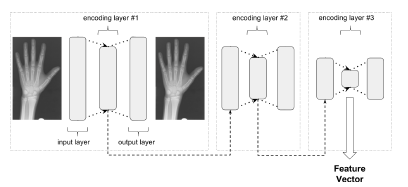Dec 2016
In recent years, medical professionals, especially radiologists, have faced an increasing number of lawsuits related to misdiagnosis and medical negligence. A significant portion of these claims is attributed to errors in diagnosis, such as misinterpreting a malignant mass as a benign lesion. The lack of a reliable tool for cross-referencing diagnoses instantly poses a challenge for radiologists seeking second opinions. To address this issue, a search engine for fast and accurate content-based image retrieval (CBIR) can revolutionize diagnostic radiology, reduce misdiagnosis cases, and minimize costly claims against clinicians and hospitals. By leveraging the vast amount of available medical image data, such a search engine can retrieve similar cases from the past and provide valuable knowledge for diagnosis, treatment, and monitoring.
Feature extraction plays a crucial role in CBIR systems, as it determines the accuracy of image retrieval. While image search and retrieval have been studied extensively, the use of autoencoders as a feature extraction technique for medical images is a relatively recent development. Traditional feature extraction methods rely on visual features such as color, shape, and texture, but these may not adequately represent the complex content of medical images. Autoencoders, a type of neural network, offer a novel approach to extract high-level features from low-level pixel data. Stacked autoencoders, which combine multiple autoencoders in a layered architecture, have shown promise in capturing the intricate mappings between input and output and producing more accurate feature representations.

feature vector is extracted from the deepest layer.
This paper proposes the use of stacked autoencoders for medical image retrieval based on global image similarity. The IRMA dataset, consisting of 14,410 x-ray images, is used for experimentation. The objective is to develop a system that, given an input x-ray image, can search for the top-ranked similar images and present them to clinicians. The similarity between images is measured using the IRMA error score. Ideally, the retrieved images would be accompanied by relevant information such as biopsy reports, treatment plans, and follow-ups, allowing practitioners to leverage the knowledge and outcomes of similar cases.
The experiments involve training and testing the stacked autoencoder model using the IRMA dataset. The IRMA dataset contains images that have been annotated by medical professionals, making it a valuable benchmark dataset for retrieval purposes. By encoding each image in the training dataset using a trained autoencoder, a compressed feature vector is obtained, which serves as a representation of the image for retrieval. The performance of the autoencoder-based image retrieval system is evaluated and analyzed.
By leveraging the power of stacked autoencoders, this paper presents a novel approach to medical image retrieval based on global image similarity. The proposed system aims to provide fast and accurate retrieval of similar images, enabling clinicians to access valuable knowledge and insights from past cases. The experiments conducted on the IRMA dataset demonstrate the potential of stacked autoencoders for medical image search and retrieval, highlighting their ability to capture complex image features and facilitate more accurate diagnosis and treatment decisions.
Additional details: Stacked Autoencoders for Medical Image Search